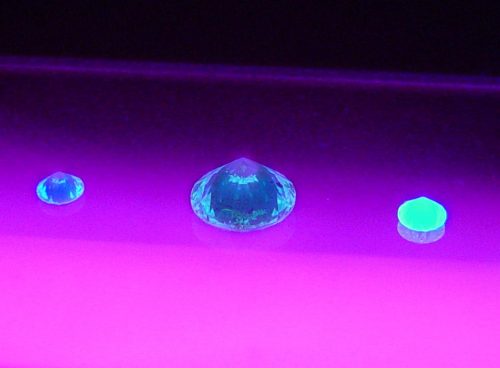
The new fine jewelry company is a leader in rare fluorescent stones.
All diamonds shimmer when light hits them. Under master hands, they are cut into interesting shapes that spark joy. Gems from Luminous Diamonds, a new fine jewelry brand, however, have an attribute that many precious stones don’t: They glow.

Luminous Diamonds’ parent company, Alrosa, is a leader in sourcing fluorescent stones, which are formed under unique geological conditions that leave trace elements during the carbon crystallization process. As a result, Luminous Diamonds shine extra bright in the sun and, most intriguingly, emit a blue glow under UV light.

“These diamonds are stunning, luminous, and make a statement,” says Rebecca Foerster, Alrosa’s president of North America. “They reflect the way modern women wear confidence like a rare jewel, and they dare us all to stand out by sharing our inner selves. Greatness in people, like diamonds, is made under pressure. When a woman follows her own inner light, others see it. Our diamonds are an enduring reminder of this light.”

To highlight this point, Luminous Diamonds enlisted female leaders from disparate industries to model its debut collection in a campaign titled Greatness Under Pressure. They are WNBA athlete Skylar Diggins-Smith, attorney and travel writer Cynthia Andrew, violinist Ezinma Ramsay, gender-fluid advocate Elliott Sailors, model Denise Bidot, and photographer Marian Moneymaker.

The 28-piece collection consists of brilliants and pavé diamonds on open-work hexagon settings. They include long necklaces with pendants, crawler and chandelier earrings, and bracelets. Each design comes with an illuminator charm that emits UV light so you can get that inner glow all the time.
Source: DCLA






